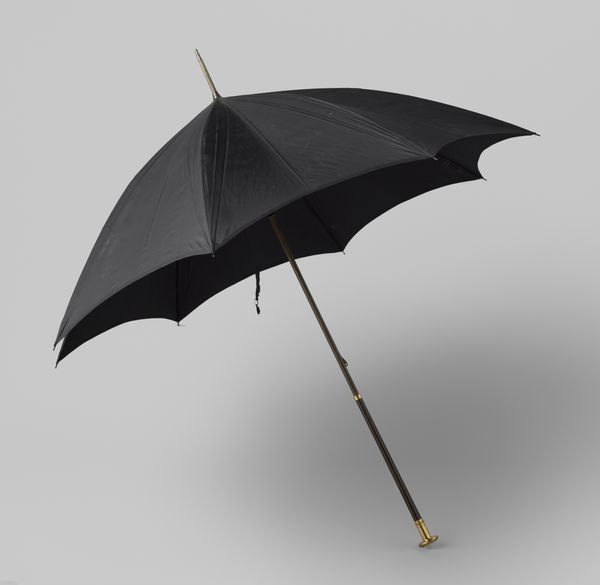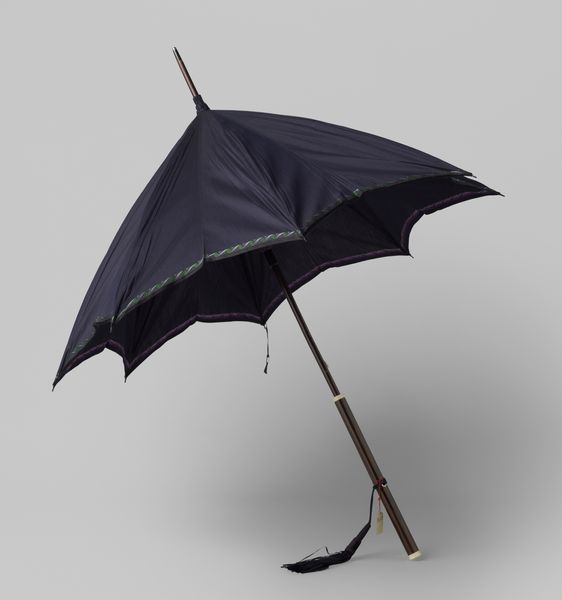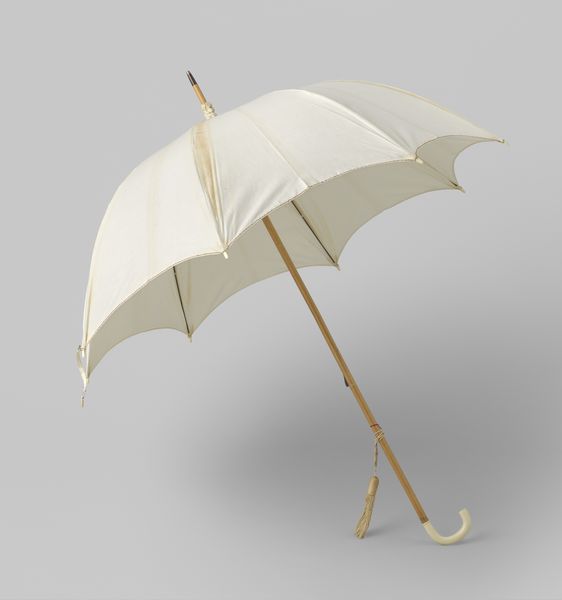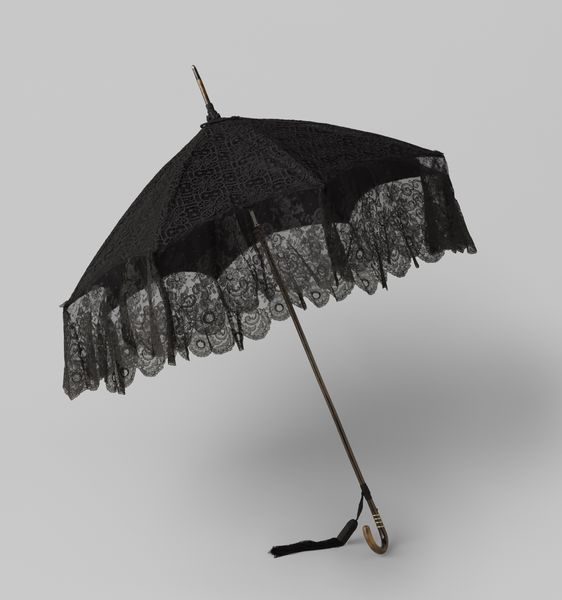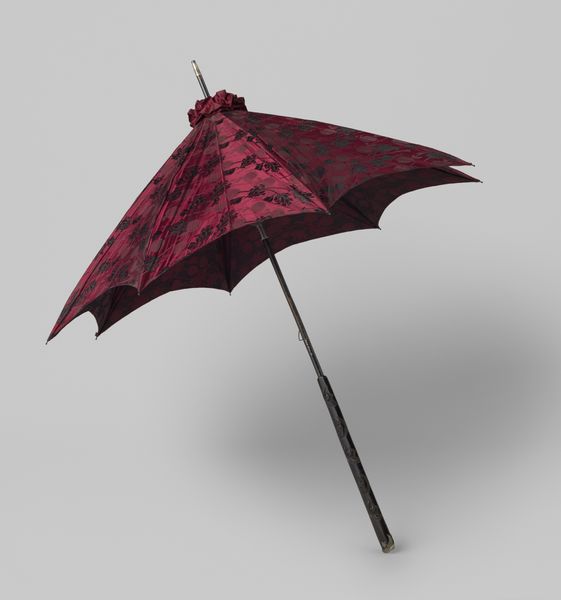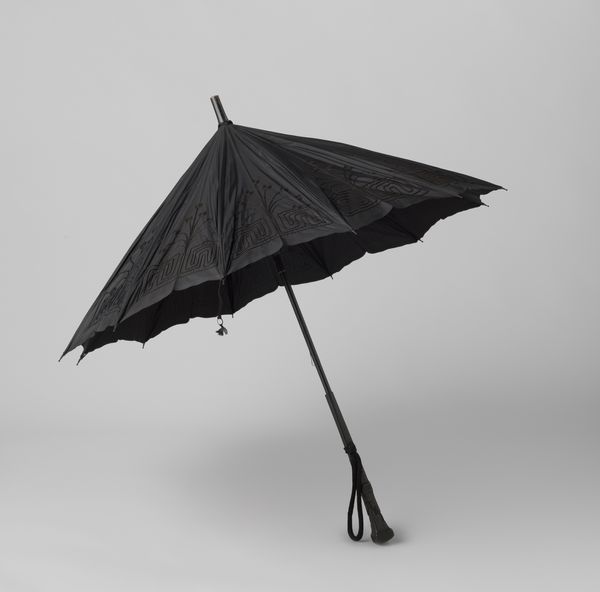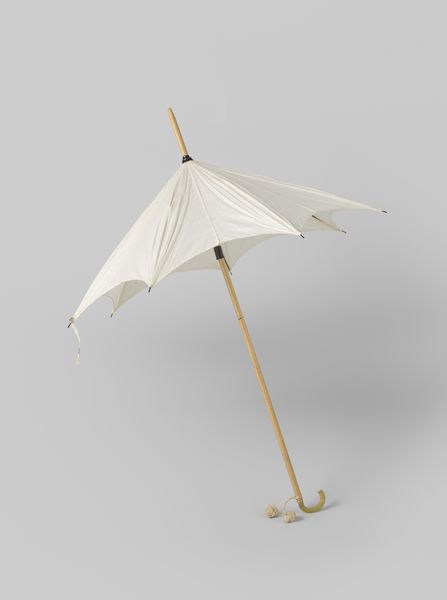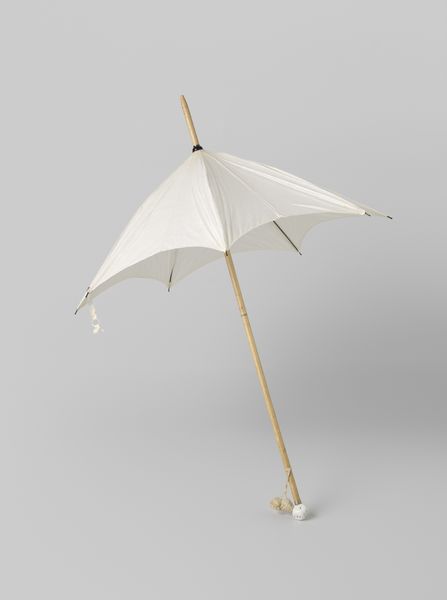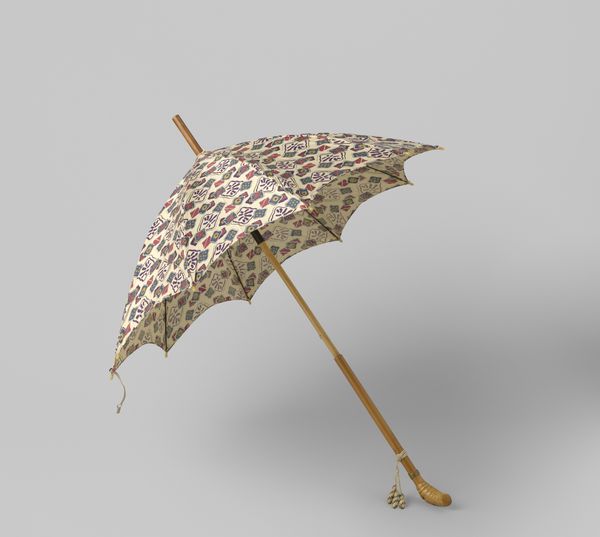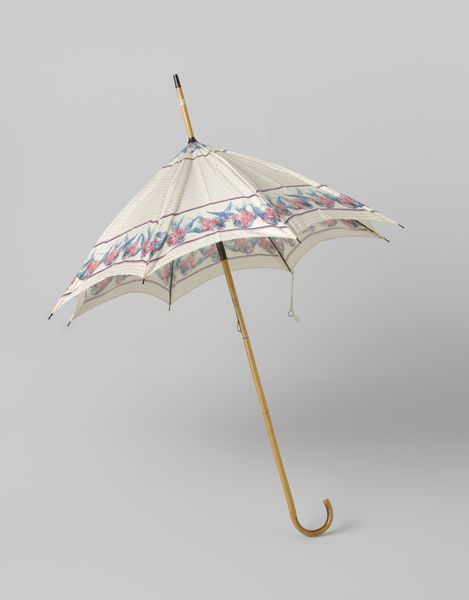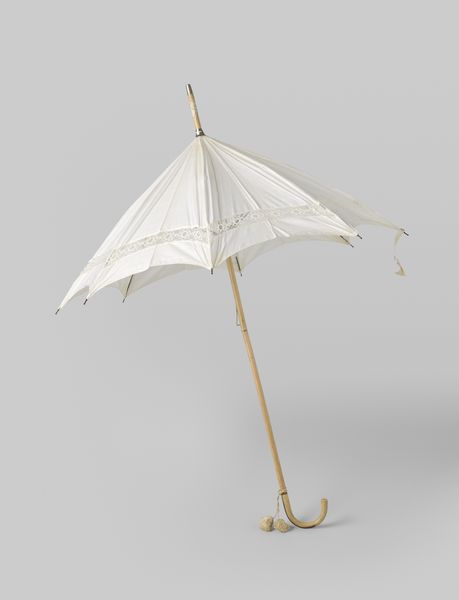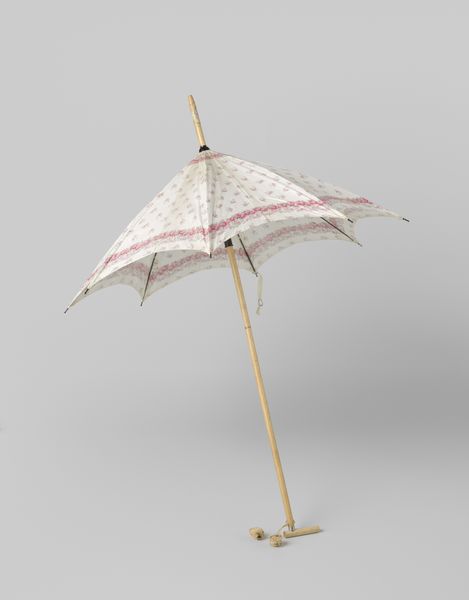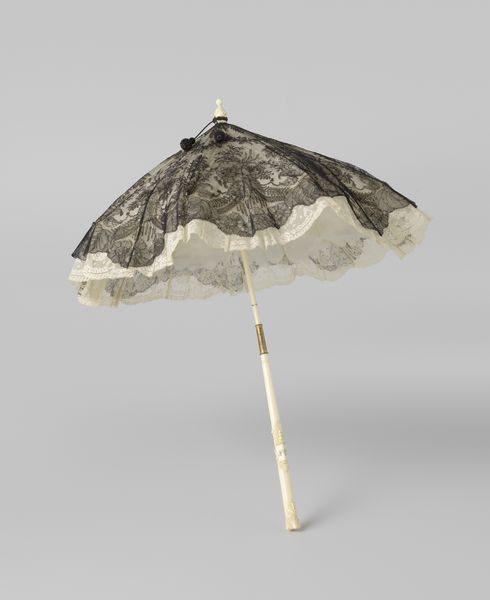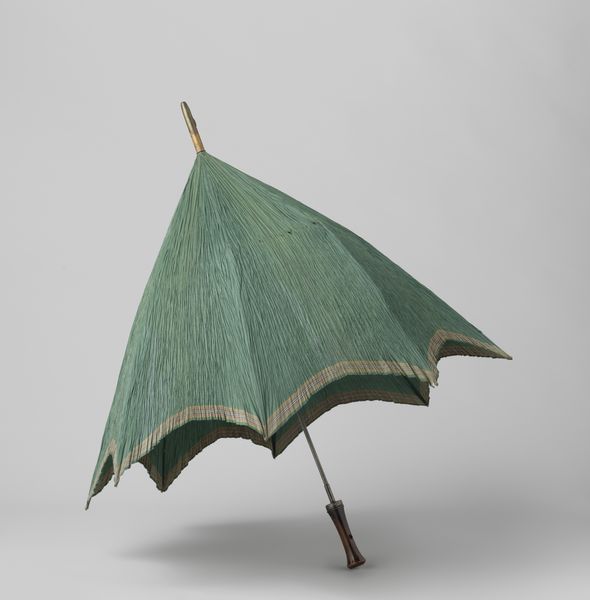
Paraplu met dek van effen zwarte zijde, met ingeweven streep langs de rand, op een houten (?) stok, waaraan een zilverkleurig gebogen handvat c. 1925 - 1950
0:00
0:00
photography
#
still-life-photography
#
photography
#
decorative-art
#
modernism
Dimensions: length 88 cm, length 60.5 cm, span 102 cm, diameter 5 cm, width 10.5 cm
Copyright: Rijks Museum: Open Domain
Editor: This image, held at the Rijksmuseum, is a photograph of an umbrella, believed to have been taken sometime between 1925 and 1950. It’s a fairly straightforward shot of a black umbrella against a light grey backdrop, yet something about the isolation of the object feels quite modern to me. What's your take? Curator: Well, it's fascinating to consider this object outside its functional context, isn't it? By isolating it, Gustav Schnitzler, the artist, invites us to see it not just as an umbrella, but as a symbol. Think about the historical period. Between the wars, umbrellas were not merely utilitarian objects. They became class signifiers, objects carried by gentlemen of means. Editor: So, the image isn’t just a picture of an umbrella, it speaks to societal structures? Curator: Precisely. Consider the highly stylized Art Deco design also. This points to specific notions of masculinity, and perhaps, privilege. Moreover, the fact that it is photographed and not painted opens it up to other interpretations around truth and representation. To me, it makes us question, who gets to be protected, and from what? Is it just the rain? Or social anxieties and political instability? Editor: That’s a powerful interpretation! I hadn't considered the symbolic weight of such a seemingly simple object. Curator: Art often holds a mirror to society, inviting us to reflect on its values, its anxieties, and its power dynamics. It prompts the viewer to consider the ways in which these things were historically regarded, as well as how they are today. Editor: I'll definitely look at still life photography differently now, and consider what is omitted or implied. Curator: And hopefully think critically about whose stories get told, and how everyday objects play a role in that narrative.
Comments
No comments
Be the first to comment and join the conversation on the ultimate creative platform.
